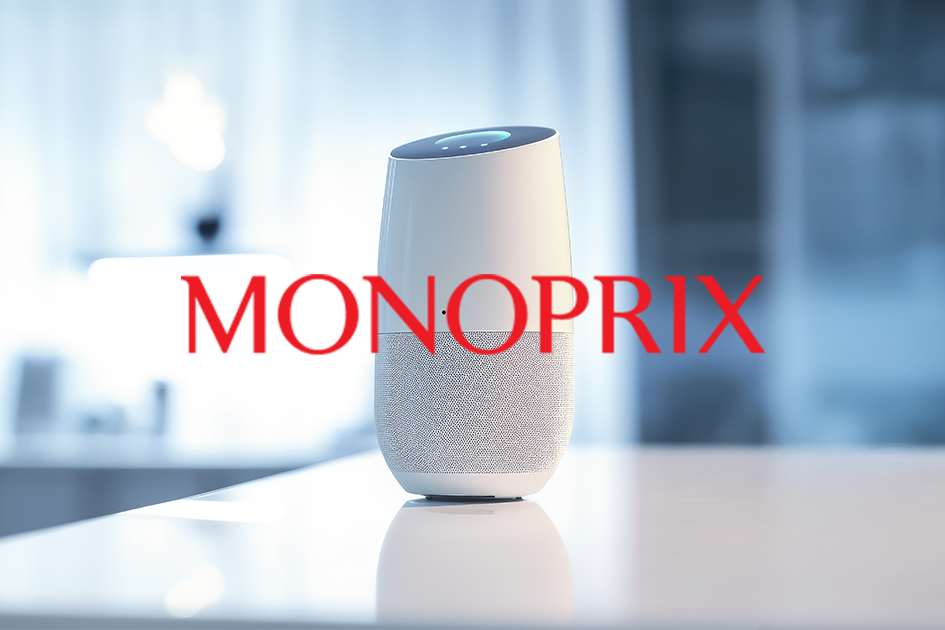Coding a brand’s voice pioneering Google Home
Vincent Luciani, CEO of Artefact, and Pierre-Marie Desbazeille, CTO of Monoprix, talk about the launch of the Monoprix application for Google Home. Why did this major distribution group launch this ambitious project? What are the challenges to be met?
Challenge: Helping Monoprix “find its voice” to enhance the customer shopping experience
Monoprix is a unique retail brand, dedicated to urban customers who seek an accessible “everything in one place” kind of store, with products ranging from fashion, cosmetics and housewares to groceries, pet supplies and baby food.
Monoprix decided to make its debut on Google Home in order to enable customers to make their shopping lists directly through Google’s home assistant, just by saying “talk to Monoprix” to open a discussion and start a list. (While it’s not yet possible to order directly from the home assistant, each completed list is prepared and packaged for pickup at the customer’s nearest store. However, full-service vocal ordering is definitely a future objective.
The brand’s mood and tone are resolutely joyful, optimistic and sparkling. Humour is an essential quality, and it was important to replicate their codes with Google Home. For example, if a user said “Remind me to buy sardines”, Google Home won’t just reply “Okay, sardines added”, but rather “The sardines are in the can!”
Solution: A permanent voice-activated shopping list – that lets customers add or delete items at will
Monoprix wanted more than just a list: they wanted to offer customers a list that they could return to from Google Home but also on the assistant. They wanted the list to be permanent, like a post-it list, but so much better: it would let users save it for later, or add or remove products at will – and empty their baskets when they’d finished shopping so they could start a new list another time.
This added a predictive quality to Monoprix’s shopping list assistant, as it was able to determine which ingredients were necessary in order to make banana bread with no input from the user (hint: not just bananas).
Awards : Delivery of a Monoprix Google Home voice shopping list assistant in under three months
Three different teams were involved in the project: data scientists with extensive knowledge of the Google Home protocol (who built the chatbot); a creative team – which very nearly meant creating a whole new discipline: VX, or Voice Experience; and a transversal team of some 30 consultants from Monoprix and Artefact.
Today, all data is stocked by Monoprix – not by Google. It’s an important consideration.
Of course, this project is a first step. A customer care dimension will be added to it, also voice activated, answering questions such as “Where is my delivery?”, “How much credit do I have on my loyalty card?”, or “When will peaches be back in stock?”
Remember: the starting point of the project was really just to replace the post-it shopping list – and so much more was accomplished. The next step is to enrich the chatbot!

 CLIENT CASES
CLIENT CASES



